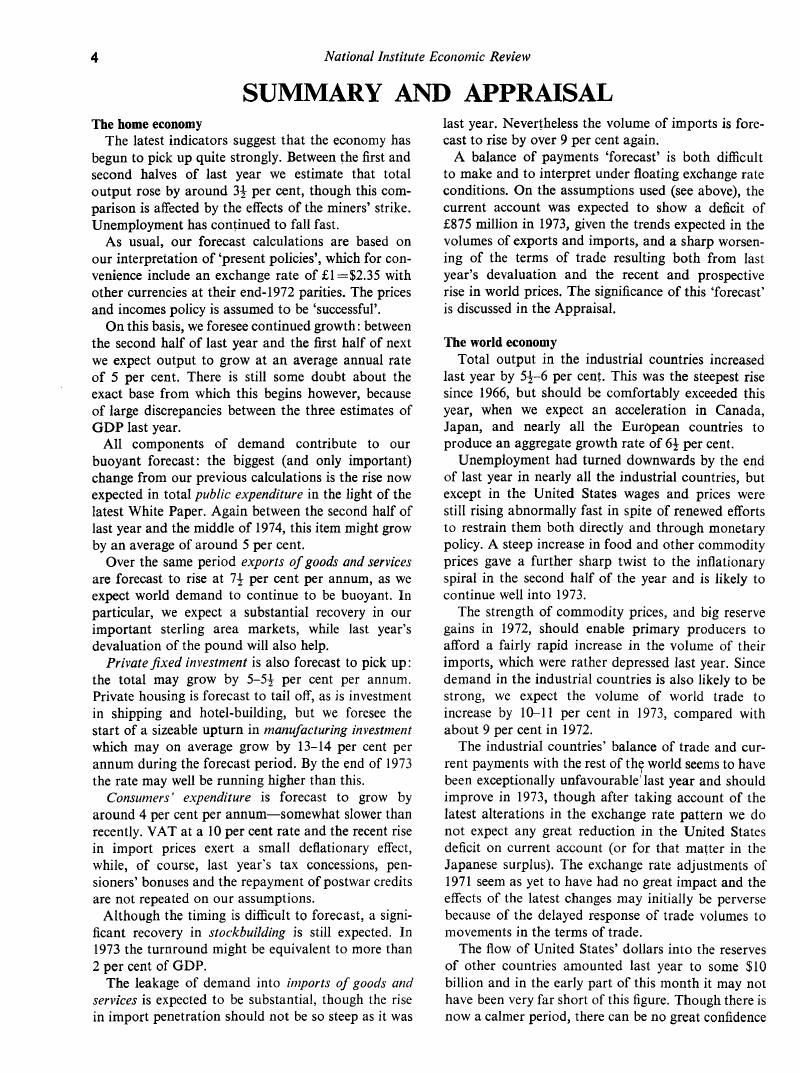No CrossRef data available.
Article contents
Summary and Appraisal
Published online by Cambridge University Press: 26 March 2020
Abstract

- Type
- Articles
- Information
- Copyright
- Copyright © 1973 National Institute of Economic and Social Research
References
page 6 note (1) Strictly speaking, so long as the rate is floating, the Government cannot just decide to change the parity. How ever, it can abstain from intervening to prevent a downward float, or indeed encourage it.
page 6 note (2) Although little weight should be put on one month's figures, the latest trade returns suggest that the deficit has not yet reached the dimensions we are ‘forecasting’.
page 6 note (3) Vis-à-vis the position in the second half of last year.
page 7 note (1) It is worth noting that our forecast on unchanged policies already incorporates a significant slowing of the rate of increase of personal expenditure. Higher import prices exert a deflationary effect, as does the change-over to VAT, while the repayment of postwar credits and the pensioners lump bonus do not recur. Fiscal drag works in the same direction, though this is largely offset in 1973 by the tax concessions implicit in the new unified tax system.
page 8 note (1) Particularly if no net increase in demand effect were required. Some subsidies would have a greater demand effect per pound than the equivalent ‘given’ to high income indivi duals with greater-than-average savings propensities. 16 February 1973.




